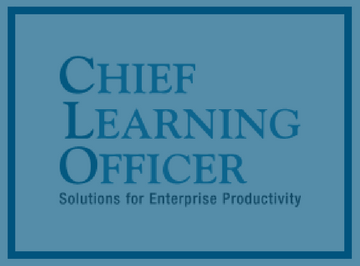Educators and Business Leaders See Missing Link for Workforce Development: Government
Educators and Business Leaders See Missing Link for Workforce Development: Government
All columnists should take their own advice regularly if for no other reason than to show some empathy for their readers. In past columns, I’ve posited ideas for how business and higher education can work together to develop tomorrow’s workforce today. Those columns encouraged CLOs to reach out to their counterparts in higher education.
I decided to do some of this outreach myself recently and worked with Wayne Smutz, Dean of Continuing Education and UCLA Extension at the University of California Los Angeles, to put together an event to bring together businesses and academic leaders to discuss innovation and creating jobs. Dr. Smutz leads the academics, finances and operations for a $54.5-million enterprise; he receives no state or campus funding. So he’s learned how to bring people together to get things done. Convincing as many high-ranking executives and their counterparts in higher education as possible to meet around a table is something Dr. Smutz encourages. He finds one-on-one meetings move audacious agendas too slowly.
The conversations I was part of during our four-hour event focused on how best to build workforce skills. We looked at ways to bring high school students into higher education; these are students, some from low-income areas, who may never have considered STEM careers. With business leaders around the table, we were able to start outlining what it would take to get these students qualified to fill jobs that California employers have openings for now and, in all likelihood, into the future. According to Dr. Smutz, it’s easier to advance a cause if you’re solving problems in real-time. I saw the beginnings of that at our meeting. And I also saw the group propel its conversation forward on the spot with the creation of a LinkedIn group for participants to keep formulating and exchanging ideas.
As excited as I am to say this sort of approach works, especially when you put a few months of planning and a decidedly focused agenda in place, I learned there’s a missing link. Here’s what I mean: Government leaders are part of the workforce conversation. In San Diego, for example, Dean Joe Shapiro of the San Diego State University College of Extended Studies recently brought together leaders from academia, business and government to spark conversations about workforce innovation. Like Smutz, Dr. Shapiro sees these roundtables as an important way to create a space for collaboration.
In San Diego, Mayor Kevin L. Faulconer has noted the “growing chasm between good paying, middle-class job openings and workers with the skills to fill them.” A lot of big city mayors echo this problem. But with the cooperation of businesses like Qualcomm and the San Diego Community College District, Faulconer launched his OpportunityWORKS taskforce to focus business and education on five careers that promise higher pay and growth for San Diegans. The taskforce also teamed up with business leaders to give students, especially in minority neighborhoods, a taste of STEM education and high-tech careers. One way this is being done is by opening labs inspired by the Qualcomm® Thinkabit Lab™, which brings 6th- to 8th-grade students from all backgrounds into a facility to learn about programming, robotics, and how an office works.
The San Diego mayor’s aim is aligned with what business leaders want and higher education can provide: educated workers. For example, roundtable discussions between San Diego’s government officials, business leaders and educators, spurred Faulconer to create economic incentives for companies in advanced manufacturing, healthcare and IT among others, to open or expand operations in low-to-moderate income neighborhoods. Educators see this as a way to expose students to what kind of jobs are available, which, in turn, sparks an interest in studying. Businesses become visible to an entire pool of potential employees who, with the right instruction, can fill out the workforce rosters at these firms in the years ahead.
The catalyst for arranging these types of meetings can and should be the CLO. In the meeting I was part of with Dr. Smutz, CLOs were at the table. But there’s no reason CLOs can’t be orchestrating the meetings.
Any savvy government official understands the importance of keeping businesses on the tax rolls. Higher education sees each company as the punctuation mark for a student’s course of study. CLOs are uniquely qualified to tell both politicians and academics what’s needed in the way of support.

This column was originally published in CLO.